Echeveria: [Cultivation, Irrigation, Associations, Pests and Diseases]
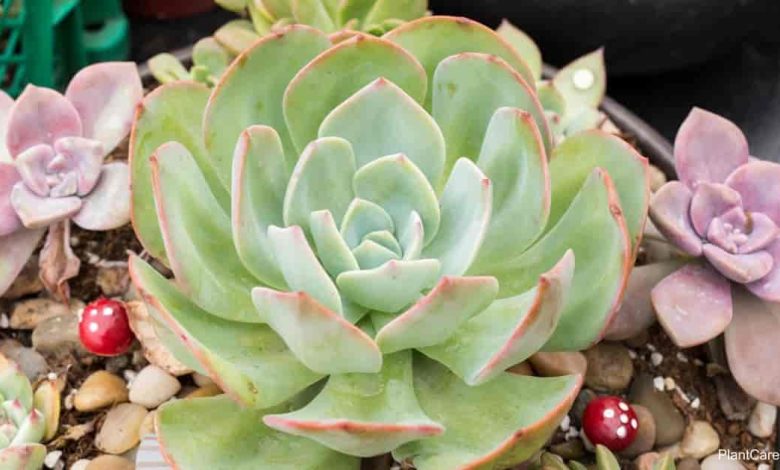
Important points when planting Echeveria
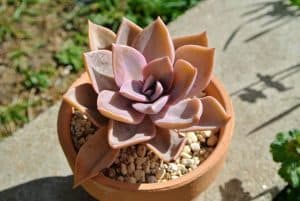 Where to sow? In full light. It needs a lot of sunlight.
Where to sow? In full light. It needs a lot of sunlight.- When? In spring.
- How do we prepare the land? Removed, removing weeds. With substrate poor in nutrients, but rich in drainage.
- How do we water? With drip.
- How often do we water? In spring and summer, 2 times a week. The rest of the year very spaced irrigations.
- Plagues and diseases? Mites, mealybugs and fungi.
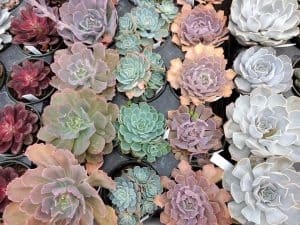 With fleshy, ovate-shaped leaves arranged in a very compact rosette, Echeveria is a succulent of the Crasulaceae family, native to Central America and Northwest America.
With fleshy, ovate-shaped leaves arranged in a very compact rosette, Echeveria is a succulent of the Crasulaceae family, native to Central America and Northwest America.
Over the years, these plants have been extensively hybridized, so there are many varieties that have been bred to produce even more interesting leaf shapes and colors.
The size of the Echeveria varies from very small to those that can reach 60 centimeters.
When to sow the Echeveria?
The Echeveria is a type of succulent that should be sown in the spring, either by seed, by cutting or by sucker.
Where to do it?
The succulent Echeveria should be located in a place with full sun, since this plant requires a lot of sunlight. However, it is necessary to take care of it from the intense solar rays of midday.
Echeveria should be kept at a temperature between 18 and 27º C.
How to prepare the land?
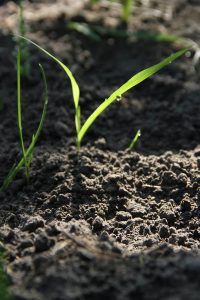 The land for planting the Echeveria, although it resists soils that are very poor in nutrients, these must be very rich in their drainage capacity.
The land for planting the Echeveria, although it resists soils that are very poor in nutrients, these must be very rich in their drainage capacity.
It is recommended that the type of soil be special for this species. The land for the Echeveria cannot have abundant nutrients. A garden soil usually does not work for this succulent.
Each farmer and gardener has their own mixtures for succulents but the important thing is that the soil contains: Excellent drainage, is not compact and does not contain abundant nutrients.
A perfect soil or substrate for Echeveria would be one that is made up of 50% potting soil, 50% pumice stone. A part of coco peat with coarse sand and perlite can also be added.
It is very important to fertilize the Echeveria once or twice a year, during the growth period (spring, summer). It is also recommended to use fish emulsion, which will be wonderful for the plant.
How do we water the Echeveria?
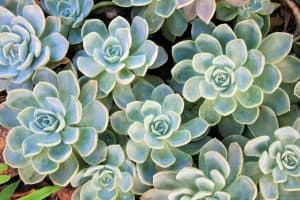 Echeveria, like all succulents, has special needs, unlike most plants, particularly regarding water and nutrients.
Echeveria, like all succulents, has special needs, unlike most plants, particularly regarding water and nutrients.
Gardeners and farmers recommend watering Echeveria regularly during spring and summer, while watering should be reduced in winter.
This plant should only be watered when the substrate is completely dry. Succulents need water to survive, but they can’t stand wet soils. It is important that during irrigation the leaves of the Echeveria are not splashed and wet, as this can cause rot and fungus.
How do we plant an Echeveria step by step?
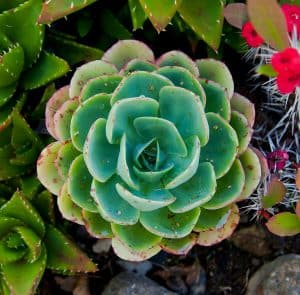 Some of the Echeveria species that grow well in containers include glauca, laui, setosa, derenbergii, and agavoids.
Some of the Echeveria species that grow well in containers include glauca, laui, setosa, derenbergii, and agavoids.
One of the problems with planting Echeveria is using very large pots for the succulent. This increases the risk that the substrate remains wet and can cause problems with fungi.
To sow the Echeveria it can be done by seeds, by shoots or by cutting.
When sowing by seed, there will be no control over the species or type of plant, for this it is better to use the sapling or cutting technique.
Planting by suckers
- Cut with a knife, preferably a garden tool, cut a shoot from those that grow at the base of the mother plant.
- Let the shoot dry for about 7 days so that the wound heals.
- Plant the sapling in a mixture of peat and sand in equal parts and keep it in good light, but not direct sunlight.
- Pay it once a month.
- When the new shoots are born, treat it with the care of an adult plant.
Multiplication by cuttings
- Detach the cuttings from the plant gently
- Plant the basal part of the leaf in a mixture of equal parts peat and sand.
- Place in a bright place and at a temperature between 15 and 18º C.
- Water a little so as not to let the substrate dry out.
- Once the shoots emerge, it will be transplanted into the final pot.
- Treat as an adult plant once it is planted in the new place.
Reproduction by seeds
- Distribute the seeds in a substrate made up of two equal parts of fine sand and one of succulent seed substrate.
- Choose a pot that is not too big or too high for multiplication, leaving a space of 2 cm. between the edge of the pot and the substrate.
- Submerge the pot in water until it is very wet and drain the excess.
- Arrange the seeds in the substrate evenly without burying.
- Line the tray with a plastic sheet to ensure a good temperature.
- Place the tray with the seeds in the shade, with a temperature between 13 and 18º C until germination.
- Keep an eye on the seeds and the plastic sheet that covers them to remove condensed water.
- When the seeds germinate, the plastic is removed.
- Transplant to its final place, once the plants are big enough to handle them.
What favorable associations does it have?
The association of crops of compatible plants produces benefits with respect to their cultivation separately, in addition to the use of light, water and/or nutrients.
The Echeveria, as it is a succulent, can be associated with other plants of the same species to form various compositions that will decorate the spaces.
What pests and diseases attack Echeveria?
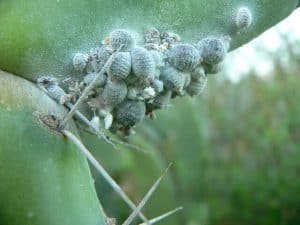 Echeveria, like all succulents, is susceptible to attack by pests and diseases.
Echeveria, like all succulents, is susceptible to attack by pests and diseases.
The pests that usually appear in the Echeveria are mites, mealybugs and also diseases caused by fungi, root rot, etc., caused by excess irrigation.
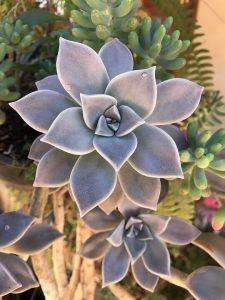 Succulents have become one of the most popular plant species today.The variety they give around colors, shapes, etc. added to the fact that they adapt to all kinds of conditions.
Succulents have become one of the most popular plant species today.The variety they give around colors, shapes, etc. added to the fact that they adapt to all kinds of conditions.
Caring for one of these plants is a simple topic that anyone can start, even the most clueless.
However, the irrigation of succulents does have to be worked in detail since an excessive amount of water will quickly drown them.
Are you ready to know all the details that we bring you about how to water a succulent and the problems associated with this care? Go for it.
watering succulents
Important points when watering succulents:
- Irrigation frequency: a deep irrigation system is used and then a dry time to wait for the substrate to be freed of all moisture. The duration time will depend on the characteristics of the environment.
- Irrigation method: with a watering can.
- Optimum time of day for irrigation: in the morning if you are outside or at any time indoors.
- Identify excess water: root rot, appearance of fungi and bacteria.
- Identify lack of water: they do not suffer major problems. If it is for an excessive time, they could be dry and with little vigor.
What watering needs do succulents have?
Succulents are plants that do not require a lot of work around irrigation because, in many cases, they do better in drought.Because the species are quite varied, all the factors involved in their environment must be taken into account to define the best frequency.
Keep in mind that a succulent planted outside will not have the same demands as one planted in a pot and kept indoors. In addition, succulents have the natural property of taking advantage of the humidity of the environment and, in some cases, they are capable of retaining water in their parts.
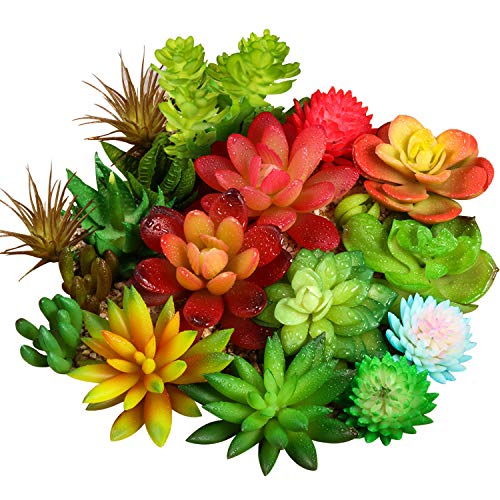
When in doubt, it is better to study in detail the type of succulent you have and make the decision based on it.
How can we detect lack of irrigation in succulents?
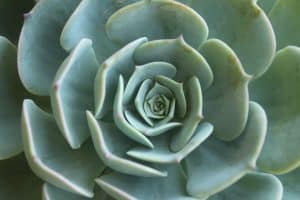 The lack of irrigation of succulents generates very few inconveniences because they have developed, for survival, an internal water accumulation system.
The lack of irrigation of succulents generates very few inconveniences because they have developed, for survival, an internal water accumulation system.
They are able to store water in the stems, leaves and roots, anticipating the time of drought that they live in their natural environments.
Even so, when the drought is excessive, it could cause them to lose vigor and make them look dry, without a doubt.
How often should we water succulents?
The frequency of watering a succulent is a complicated factor to calculate because many factors influence. Faced with this reality, the best advice is to carry out a very deep irrigation and then let the necessary days pass for it to dry.
That way, they’ll only get the right amount of water, and their risks of overwatering will decrease. If the succulents are in a pot, it will suffice to water until the water comes out of the holes below and leave afterwards.
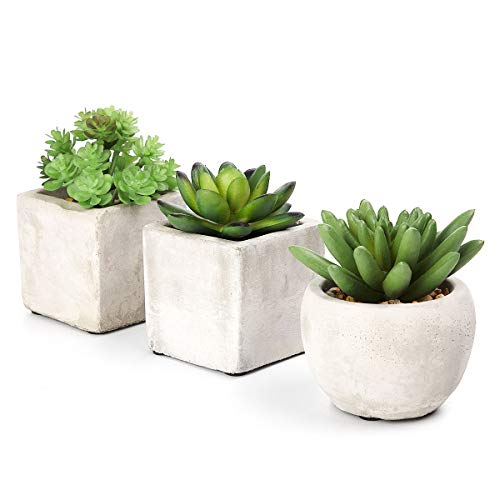
In the case of those planted in the garden, it is necessary to measure an amount of water that is convenient and allow it to flow slowly. In this way, you will make it easier for the earth to absorb the water and avoid puddles. Take into account that it must have excellent drainage.
What is the best way to water succulents?
You can water succulents with a watering can that has small holes and a long neck.This shape is ideal because it makes it easier for the water to flow out little by little and thus avoid puddles.
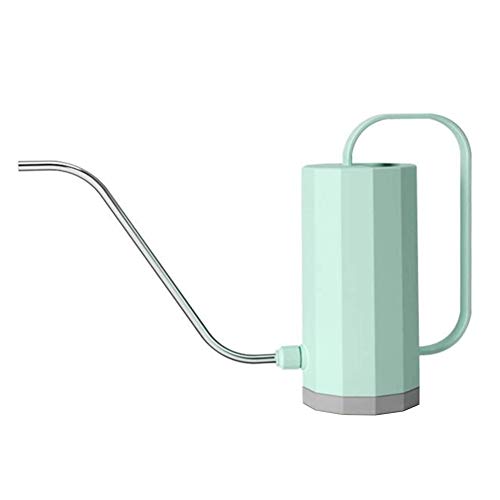
On the other hand, rapid water outflow can also create confusion around the extent of water deep in the ground, especially outside. It is common to think that enough has been done because the surface looks wet, but in reality the water has not reached the lowest parts of the earth.
How do we detect excess water in succulents?
Root rot from overwatering is one of the most common problems succulents die from. For this reason, it becomes crucial to give them time for the substrate to dry.
This same condition motivates the appearance of fungi and bacteria and, therefore, of diseases that can drastically affect succulents. Ensuring that the risks are sufficient but not extreme is the only alternative to prevent these problems from manifesting.
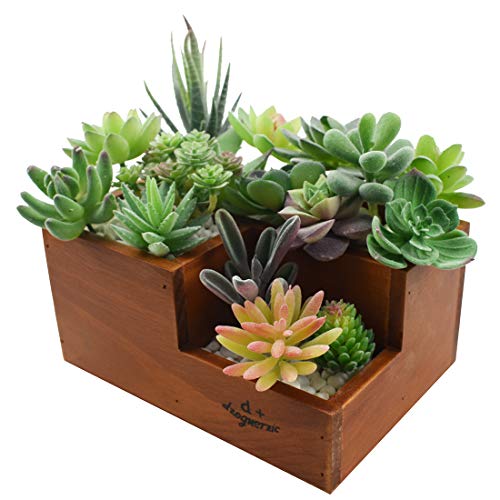
The irrigation of succulents is a matter of care since their natural living conditions have enabled them to maintain a different hydration system than the rest of the plants. This invites us to be very well informed about the correct techniques to start this care and avoid setbacks.
Bibliographic references
- Cacti and other succulents, M Uhlig – 2008 – books.google.com
- Succulents: contemporary plants, GC Arenaza – RD-ICUAP, 2019 – rd.buap.mx
- Ecological role of root contraction under drought in succulent plant species, A Ponce Bautista – 2012 – repository.ipicyt.edu.mx
- Collection of cacti and other succulents of the Botanical Garden of the Faculty of Higher Studies Zaragoza, R Rios Gomez – 2015 – 132.248.161.133
- Activities of the Latin American and Caribbean Society of Cactaceae and other Succulents (SLCCS) in the Dominican Republic, June 2006, JL Fernández Alonso – 2006 – digital.csic.es
- Cactáceas ysuculentasdel jardín botánico Lankester, MR Rossi – 1996 – books.google.com
Quizás también te interesa:
- [11] Plantas Anti Mosquitos: Hierbas, Ornamentales y Carnívoras
- [15] Plantas en Peligro de Extinción: Listado Completo y Descripción
- 10 Plantas Anti Humedad Perfectas para Tu Casa
- 15 Mejores Plantas para Zonas Húmedas
- 23 Plantas de Exterior Resistentes: [Listado, Características y Cuidados]
- 25 Plantas de Rápido Crecimiento: [Tipos, Características e Imágenes]
- 30 Imágenes y Fotos de Plantas Trepadoras
- Abelia Floribunda: [Cultivo, Sustrato, Cuidados, Riego y Características]
- Abonar para la Floración: ¿Cómo, Cuándo y Cuánto? – Sembrar100
- Abonar Plantas: ¿Cómo, Cuándo y Cuánto? – Sembrar100
- Abrojos: [Cultivo, Riego, Asociaciones, Plagas y Enfermedades]
- Acanthus Mollis: [Características, Cultivo, Cuidados e Inconvenientes]
- Acedera: [Cultivo, Riego, Cuidados, Plagas y Enfermedades]
- Acónito: [Cultivo, Riego, Cuidados, Plagas y Enfermedades]
- Adelfillas: [Cultivo, Riego, Cuidados, Plagas y Enfermedades]
- Adiantum: [Cultivo, Sustrato, Riego, Cuidados, Plagas y Enfermedades]
- Aeoniun Arboreum: [Cultivo, Riego, Asociaciones, Plagas y Enfermedades]
- Agapanto: [Cultivo, Riego, Cuidados, Plagas y Enfermedades]
- Agave: [Cuidados, Características, Siembra, Riego y Problemas]
- Agerato: [Cultivo, Riego, Cuidados, Plagas y Enfermedades]
- Aglaonema: [Cuidados, Siembra, Riego, Sustrato y Características]
- Aglaonemas: [Cultivo, Riego, Cuidados, Plagas y Enfermedades]
- Ajenjo: [Cultivo, Riego, Cuidados, Plagas y Enfermedades]
- Ajo Rosado: [Cultivo, Riego, Cuidados, Plagas y Enfermedades]
- Capers: [Cultivation, Irrigation, Care, Pests and Diseases]
- Aliaga: [Characteristics, Cultivation, Care, Pests and Diseases]
- Alocasia Amazonica: [Characteristics, Planting, Care, Irrigation]
- Alocasias: [Cultivation, Irrigation, Care, Pests and Diseases]
- Aloe Arborescens: [Cultivation, Irrigation, Associations, Pests and Diseases]
- Aloe Ferox: [Cultivation, Care, Irrigation, Substrate, Pests and Diseases]
- Alyssum: [Characteristics, Cultivation, Care and Disadvantages]
- Yellow Poppy: [Cultivation, Irrigation, Care, Pests and Diseases]
- Beach Poppy: [Cultivation, Irrigation, Care, Pests and Diseases]
- Anemone: [Cultivation, Irrigation, Care, Pests and Diseases]
- Angelica: [Cultivation, Irrigation, Care, Pests and Diseases]
- Anise: [Cultivation, Irrigation, Care, Pests and Diseases]
- Antirrhinum: [Care, Planting, Reproduction and Pruning]
- Anthurium: [Cultivation, Irrigation, Care, Pests and Diseases]
- Celery: [Cultivation, Irrigation, Care, Pests and Diseases]
- Aptenia: [Cultivation, Irrigation, Care, Pests and Diseases]
- Jade Tree or Jade Plant: [Cultivation, Care, Substrate and Irrigation]
- Ardisia: [Cultivation, Irrigation, Care, Pests and Diseases]
- Armuelle: [Cultivation, Irrigation, Care, Pests and Diseases]
- Mother-in-law’s Seat: [Cultivation, Irrigation, Care, Pests and Diseases]
- White Astilbe: [Characteristics, Cultivation, Care and Disadvantages]
- Astrancia: [Cultivation, Irrigation, Care, Pests and Diseases]
- Aucuba Japonica: [Cultivation, Care, Substrate, Irrigation, Pests and Diseases]
- Banderillas: [Cultivation, Irrigation, Care, Pests and Diseases]
- Beaucarnea: [Cultivation, Irrigation, Care, Pests and Diseases]
- Bidens: [Cultivation, Irrigation, Care, Pests and Diseases]
- Shepherd’s Purse: [Cultivation, Irrigation, Care, Pests and Diseases]
- Cai xin: [Cultivation, Irrigation, Care, Pests and Diseases]
- Calateas: [Cultivation, Irrigation, Care, Pests and Diseases]
- Calendula: [Cultivation, Irrigation, Care, Pests and Diseases]
- Campanilla: [Cultivation, Irrigation, Care, Pests and Diseases]
- Canna Indica: [Planting, Care, Irrigation, Substrate and Pests]
- Musk Thistle: [Cultivation, Irrigation, Care and Problems]
- White Thistle: [Cultivation, Irrigation, Care, Pests and Diseases]
- Runner Thistle: [Cultivation, Irrigation, Care, Pests and Diseases]
- Carex: [Cultivation, Associations, Pests and Diseases]
- Carpobrotus: [Cultivation, Irrigation, Care, Pests and Diseases]
- Celandine: [Cultivation, Irrigation, Care, Pests and Diseases]
- Celinda: [Characteristics, Cultivation, Care and Disadvantages]
- Chayotes: [Cultivation, Irrigation, Care, Pests and Diseases]
- Chrysanthemum: [Types, Care, Multiplication and Irrigation]
- Tiger Nuts: [Cultivation, Irrigation, Care, Pests and Diseases]
- Prickly Pears: [Cultivation, Irrigation, Care, Pests and Diseases]
- Maritime Cineraria: [Characteristics, Care, Planting, Pruning and Problems]
- Clivia Miniata: [Characteristics, Cultivation, Care and Disadvantages]
- How to Fertilize Plants to Grow Faster – Sembrar100: Our Method
- How to Fertilize Green Plants: Our Formula – Sembrar100
- How to Plant Incense: The Guide You Need + [Images and Step by Step]
- How to Plant Hyacinths in your Garden: Complete Guide
- Crepis Vesicaria: [Characteristics, Cultivation, Care and Disadvantages]
- Elk Horn: [Cultivation, Irrigation, Care, Pests and Diseases]
- Cultivating Passion Fruit in Spain: [Cultivation, Care, Pests and Diseases]
- Cultivate Living Room Palm Tree: [Light, Care, Substrate and Irrigation]
- Dahlias: [Cultivation, Irrigation, Care, Pests and Diseases]
- Delphinium: [Cultivation, Associations, Pests and Diseases]
- Dichondra: [Characteristics, Care, Planting and Reproduction]
- Dandelion: [Cultivation, Irrigation, Care, Pests and Diseases]
- Yellow Foxglove: [Cultivation, Irrigation, Care, Pests and Diseases]
- Digital Black: [Cultivation, Irrigation, Care, Pests and Diseases]
- Dimorphoteca: [Characteristics, Cultivation, Care and Disadvantages]
- Dipladenia: [Cultivation, Irrigation, Care, Pests and Diseases]
- Durillo: [Cultivation, Irrigation, Care, Pests and Diseases]
- The Caladium: [Characteristics, Planting, Care, Irrigation and Substrate]
- The Coleus: [Characteristics, Planting, Care, Irrigation and Substrate]
- The Croton: [Planting, Care, Substrate, Irrigation] – Complete Guide
- Jasmine: How to Plant it and its Care
- The Pelargonium: [Planting, Care, Irrigation and Substrate]
- El Singonio: [Characteristics, Planting, Care, Substrate and Irrigation]
- El Tajinaste: [Planting, Care, Irrigation, Substrate, Characteristics]
- Elaeagnus: [Characteristics, Care, Planting, Pruning and Problems]
- Erica Australis: [Care, Planting, Irrigation, Substrate and Pests]
- Erica Gracilis: [Characteristics, Cultivation, Care and Disadvantages]
- Sainfoin: [Characteristics, Cultivation, Care and Disadvantages]
- Tarragon: [Characteristics, Care, Planting, Pruning and Problems]
- Fatsia Japonica: [Characteristics, Cultivation, Care and Disadvantages]


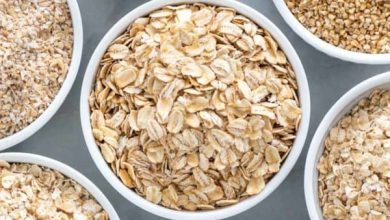
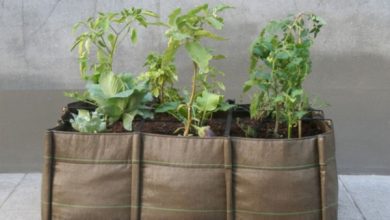
![Photo of How to Prune an Avocado Tree: [Guide on Avocado Tree Pruning]](https://www.complete-gardening.com/wp-content/uploads/2022/08/how-to-prune-an-avocado-tree-guide-on-avocado-tree-pruning-390x220.jpg)